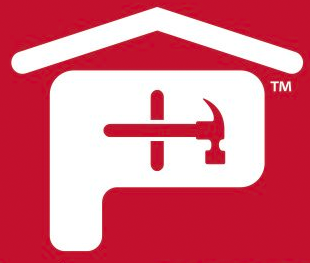It is extremely essential to manage moisture in an exterior wall assembly to protect your building from possible damage. If moisture is allowed to enter the spaces between the exterior and interior walls, every element, all the contents, and even occupants, are put at risk. The damage can be minor if caught early, but can also be so severe as to require completely gutting a building's interior.
Expensive property damage and hazardous health conditions are two serious reasons to ensure all exterior wall assemblies are constructed in a way that will prevent or manage any moisture intrusion. Whether it’s new construction or a renovation, managing moisture content of the building materials from which the building is made must take high priority.
The Drive To Dry
In an ideal world, every wall assembly would be dry from the day it is built. The materials would have minimal moisture and the weather would be perfect with low humidity during construction. However, in the real world this is rarely the case and installation can sometimes open the door to moisture entering. Walls can get wet, from the inside and the outside, and in some cases, they start out wet. Without a method to dry out, it’s only a matter of time before this can lead to mold, mildew, peeling paint, or worse.
Because we don’t live in an ideal world, we have to take time to provide dry conditions before a project begins, while making plans to manage moisture in the future. The best way to prepare is to have an understanding of how moisture can develop in a wall assembly. Once that is known, the choice must then be made to select the most effective form of wall insulation.
A Common Wet
Condensation occurs when the temperature of a surface falls below the dew point. In cold climates, the inside surface of wall sheathing (which has very little insulating value) comes into contact with warm, moist air from inside a building. If the sheathing is below the dew point, determined by humidity levels and air temperature, condensation will occur on the inside, putting the sheathing, studs, and the wall insulation at risk of water damage. This phenomenon also occurs in hotter climates when warm, humid air comes in contact with cooler, interior surfaces.
Controlling the interior wall cavity and exterior sheathing temperature can effectively manage condensation in wall assemblies. To increase thermal efficiency, 2x6 wall construction has been used off and on for years. Builders today know that old method can create insulation issues since the batt insulation used in this type of wall assembly is often not installed correctly. It can shift and settle over time, creating uneven (and thus ineffective) insulation. It can still prove costly to heat and cool the house. There has to be a wall assembly form that can prevent moisture intrusion without sacrificing thermal performance.
Continuous Insulation
A continuous layer of insulation, usually installed outboard of a building, eliminates the issue of the insulation shifting and settling, while helping manage potential issues with condensation. When the sheathing is enhanced or replaced by rigid foam continuous insulation (CI), the interior wall cavity is kept at a more consistent, warmer temperature in cold climates that can effectively reduce the threat of condensation.
By adjusting the amount of foam on an exterior wall, the builder can move the dew point to occur inside the foam, where condensation cannot take place. This can help the exterior wall assembly and building be more thermally efficient than with the 2x6 method and keep moisture out of the wall assembly.
Using CI also allows the temperature in the wall cavity to rise, which promotes drying towards the interior—the humidity controlled side of the wall. In this way, any moisture that gets into the wall during construction, or by leakage, now has a pathway to dryness. It has been proven conclusively that CI is the most effective way to insulate a building. For more information on Atlas Wall CI’s line of continuous insulation products, visit the continuous wall insulation section.



 Gear!
Gear! PRO LOGIN
PRO LOGIN